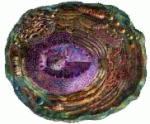Cell Biology
|
25 july 2015 13:34:49 |
| L- and D-lactate enhance DNA repair and modulate the resistance of cervical carcinoma cells to anticancer drugs via histone deacetylase inhibition and hydroxycarboxylic acid receptor 1 activation (Cell Communication and Signaling) |
|
Tweet Background:
The consideration of lactate as an active metabolite is a newly emerging and attractive concept. Recently, lactate has been reported to regulate gene transcription via the inhibition of histone deacetylases (HDACs) and survival of cancer cells via hydroxycarboxylic acid receptor 1 (HCAR1). This study examined the role of L- and D-lactate in the DNA damage response in cervical cancer cells.
Methods:
Three cervical cancer cell lines were examined: HeLa, Ca Ski and C33A. The inhibitory activity of lactate on HDACs was analysed using Western blot and biochemical methods. The lactate-mediated stimulation of DNA repair and cellular resistance to neocarzinostatin, doxorubicin and cisplatin were studied using γ-H2AX, comet and clonogenic assays. HCAR1 and DNA repair gene expression was quantified by real-time PCR. DNA-PKcs activity and HCAR1 protein expression were evaluated via immunocytochemistry and Western blot, respectively. HCAR1 activation was investigated by measuring intracellular cAMP accumulation and Erk phosphorylation. HCAR1 expression was silenced using shRNA.
Results:
L- and D-lactate inhibited HDACs, induced histone H3 and H4 hyperacetylation, and decreased chromatin compactness in HeLa cells. Treating cells with lactate increased LIG4, NBS1, and APTX expression by nearly 2-fold and enhanced DNA-PKcs activity. Based on γ-H2AX and comet assays, incubation of cells in lactate-containing medium increased the DNA repair rate. Furthermore, clonogenic assays demonstrated that lactate mediates cellular resistance to clinically used chemotherapeutics. Western blot and immunocytochemistry showed that all studied cell lines express HCAR1 on the cellular surface. Inhibiting HCAR1 function via pertussis toxin pretreatment partially abolished the effects of lactate on DNA repair. Down-regulating HCAR1 decreased the efficiency of DNA repair, abolished the cellular response to L-lactate and decreased the effect of D-lactate. Moreover, HCAR1 shRNA-expressing cells produced significantly lower mRNA levels of monocarboxylate transporter 4. Finally, the enhancement of DNA repair and cell survival by lactate was suppressed by pharmacologically inhibiting monocarboxylate transporters using the inhibitor α-cyano-4-hydroxycinnamic acid (α-CHCA).
Conclusions:
Our data indicate that L- and D-lactate present in the uterine cervix may participate in the modulation of cellular DNA damage repair processes and in the resistance of cervical carcinoma cells to anticancer therapy. |
| 165 viewsCategory: Cell Biology |
 Tyr724 phosphorylation of ELMO1 by Src is involved in cell spreading and migration via Rac1 activation (Cell Communication and Signaling) Tyr724 phosphorylation of ELMO1 by Src is involved in cell spreading and migration via Rac1 activation (Cell Communication and Signaling)Integration of actin dynamics and cell adhesion by a three-dimensional, mechanosensitive molecular clutch (Nature Cell Biology) 
|
| blog comments powered by Disqus |
MyJournals.org
The latest issues of all your favorite science journals on one page
The latest issues of all your favorite science journals on one page



